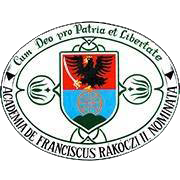Please use this identifier to cite or link to this item:
https://dspace.kmf.uz.ua/jspui/handle/123456789/3477| Title: | Túlélve a túlélhetetlent. „Málenkij robotra” hurcoltak visszatérése Kárpátaljára |
| Other Titles: | Surviving the unsustainable. Return of the deported to “Malenkij robot” to Subcarpathia |
| Authors: | Molnár D. Erzsébet Молнар Д. Єлизавета Yelyzaveta Molnar D. |
| Keywords: | málenkij robot;elhurcoltak;Kárpátalja;kárpátaljai magyarok |
| Issue Date: | 2021 |
| Publisher: | Gulág- és Gupvikutatók Nemzetközi Társasága |
| Type: | dc.type.researchStudy |
| Citation: | In Bognár Zalán és Muskovics Andrea Anna (szerk.): GUPVI, GULAG: Magyarok a szovjet lágerbirodalomban 1944/45-2019/20. A Gulág- és Gupvikutatók Nemzetközi Társasága VIII. nemzetközi konferenciájának tanulmánykötete. Miskolc, Gulág- és Gupvikutatók Nemzetközi Társasága, 2021. 132-150. |
| Abstract: | A „málenkij robot” kétséget kizáróan a kárpátaljai magyarságot leginkább sújtó
szovjet intézkedésként tartható számon. 1944. november 12-én ülésezett a
4. Ukrán Front Katonai Tanácsa, ahol meghozták az akkor még szigorúan titkos
0036. számú határozatot, amelyben elrendelték a területen élő 18–50 éves
korú német és magyar nemzetiségű hadköteles személyek összeírását, majd
ezt követően külön osztagokban, listák szerint, konvoj alatt hadifogoly-gyűjtőhelyre
történő irányítását.1 Másnap, november 13-án Kárpátalja szerte falragaszok
jelentek meg Városparancsnokság 2. számú parancsa címmel, amely
minden nagyobb településen hirdette a 18–50 év közötti magyar és német
nemzetiségű férfilakosság jelentkezési kötelezettségét. A parancs tartalmazta
továbbá azt is, hogy abban az esetben, ha valaki nem teljesíti a parancsot,
akkor haditörvényszék elé kerül. A jelentkezés utolsó napjaként a hatóságok
november 16-át jelölték meg. Abstract. “Malenkij robot” can be considered the most tragic Soviet measure that hit the Subcarpathian Hungarians at the end of the World War II. It was an ethnic cleansing which began in November 1944 and according to available archival sources we can state that approximately 30,000 people were deported from the region to the Soviet prisoner-of-war camps. The deportations affected all Hungarian-inhabited settlements in Subcarpathia. About one-third of the prisoners could not return to their homeland because they did not survive hunger, inhumane conditions and treatment. Prisoners who survived the horrors of the camps mainly began to be released from 1946. The survivors who came back to Subcarpathia encountered a new legal and administrative environment and arrangement as, on January 22 1946, the Soviet Union annexed the region. The Hungarians of Subcarpathia became second-class in their own homeland, and those who returned from the “malenkij robot” became doubly-stigmatized. The present study describes the conditions under which the survivors returned to Subcarpathia and the difficulties they faced in the new regime. The survivors’ mental trauma, caused by the Soviet captivity and the decades-long taboo on reference to it, are also dealt with in the paper. |
| Description: | https://www.gulag.hu/wp-content/uploads/2022/02/Bogn%C3%A1r-Zal%C3%A1n_Muskovics-Andrea-Anna-GULAG-GUPVI-Magyarok-a-szovjet-l%C3%A1gerbirodalomban-GKNT-2021..pdf#page=133 |
| URI: | https://dspace.kmf.uz.ua/jspui/handle/123456789/3477 |
| ISBN: | 978-615-01-2333-2 |
| metadata.dc.rights.uri: | http://creativecommons.org/licenses/by-nc-nd/3.0/us/ |
| Appears in Collections: | Molnár D. Erzsébet |
Files in This Item:
| File | Description | Size | Format | |
|---|---|---|---|---|
| Molnar_D_E_Tulelve_a_tulelhetetlent_2021.pdf | In Bognár Zalán és Muskovics Andrea Anna (szerk.): GUPVI, GULAG: Magyarok a szovjet lágerbirodalomban 1944/45-2019/20. A Gulág- és Gupvikutatók Nemzetközi Társasága VIII. nemzetközi konferenciájának tanulmánykötete. Miskolc, Gulág- és Gupvikutatók Nemzetközi Társasága, 2021. 132-150. | 838.58 kB | Adobe PDF | View/Open |
This item is licensed under a Creative Commons License





